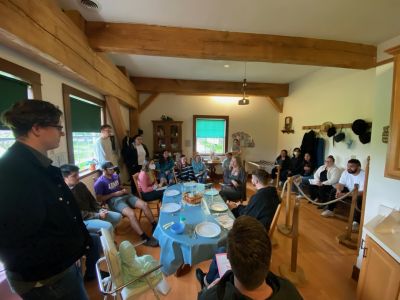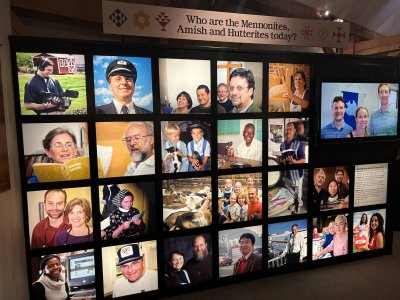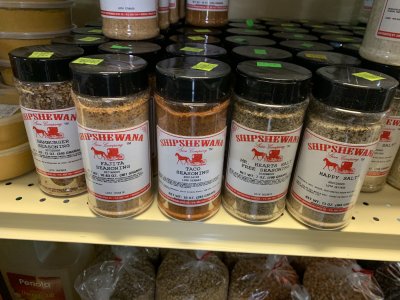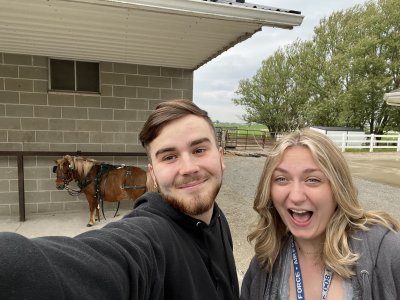We got back from Chicago on Saturday and we were off again on Wednesday to learn about a different community, right in our backyard, the Amish. We started the day by eating a sweet treat that is iconic to this area, Rise n’ Roll donuts – a business founded by an Old Order family who then sold it when it became too big for their taste. Then, we were off to Menno-Hof to get a background on Anabaptism to better understand the community that we would be exploring later in the day.

Menno-Hof is a museum in Shipshewana that guides guests through the story of the Anabaptist faith, from their roots to who they are today. With tour guides, interactive stories, and even a tornado room, the museum effectively shares the story of those early immigrants, moving for religious freedom. The most thought-provoking parts of the museum were the persecution of early anabaptists in 16th century Europe, where many members of the community were being martyred for their beliefs. It was also very convincing to see how the groups split apart, but continued to keep their core beliefs of being peacemakers, living a life for Christ, and voluntary baptism. Seeing this history contextualized who the Amish are today and how they interact with the world, including reasons behind their exclusivity.

Once we went out on our own, we followed the map and went to Owl Toy Craft, a local toy store run right out of the owners front door. The store, which is recognized nationally, was very quaint including handmade wooden toys, made in house. At this shop, we were especially excited to see a miniature pony, named peanut (shown below) whom we got to pet. The shop owners made beautiful wooden creations, which shows that they took their time to make products that people within and outside of the community could all enjoy. It was interesting to learn that the majority of their customers were “english,” a term that the Amish use for anyone who is not Amish.

River Norton, Amelia Turnbull
The next store that stood out was Homeland Sales, a small Amish run grocery store. The shop seemed to be catered to the “English”, rather than the Amish, with name brand items, as well as things like pop-its and frozen meals. The Amish seemed to even put their name out as a brand, like “amish spices” and “amish peanut butter.” They even seemed to mix with different cultures, with fajita seasoning, which they branded with a horse and buggy logo.
In some ways, what we experienced in Chicago seemed to be similar to what was seen in Shipshewana. The communities in Chicago, like Devon Ave., were very big on community living, the preservation of their culture, and stressed the importance of family. These core values were also very strong within the Amish community. From what we could see, the Amish value family ties, living a counter-cultural lifestyle, focused on modesty and simplicity. The two groups stuck to their roots and lived according to their own culture and beliefs, rather than how the average American lives.
In contrast, Chicago and Shipshewana felt vastly different at the same time. Although both identities had similar values, they showed it differently. The Indian community did not value simplicity, with more extravagant clothing, jewelry, and successful businesses. The Amish wore plain clothes and tried not to draw any attention to themselves.
Shipshewana drew the most similarities to Andersonville in Chicago, the once majority Swedish immigrant street, but now very much modernized. Both groups seemed to “sell” their cultures, with Andersonville branding items with a Swedish flag and Shipshewana doing the same, with the word “Amish” and a depiction of a horse and buggy on their products. The two communities seemed to hold tight to their roots, while also being a tourist attraction.
The area’s Amish seem to be an example of a community trying to preserve what they know, while also teaching others about what they believe and what they do on a daily basis. For those on the outside the Amish may seem like a closed off community, but they are far more dynamic than it may seem at first glance.





